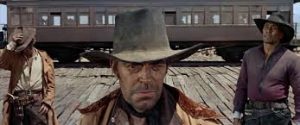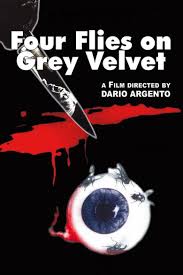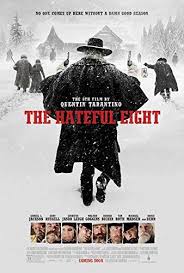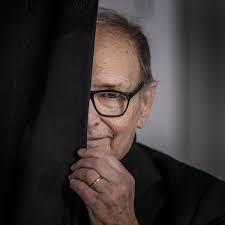
© enniomorricone.org
The death of legendary film composer Ennio Morricone a fortnight ago shouldn’t have been a surprise since he was at the big age of 91. But he’d shown such a cussed approach to life and art, still composing music, going on world tours and quarrelling with young whippersnappers like Quentin Tarantino while he was in his ninth decade, that you assumed he was going to continue living and composing forever. Anyway, a heavy workload earlier this month prevented me from penning a tribute to the great man at the time of his passing. Here’s my belated tribute now.
Ennio Morricone was the first film composer I knew. I recognised his work well before I recognised that of John Barry, Bernard Hermann, Leonard Bernstein or Henry Mancini and even before the blockbuster themes of Jaws (1976) and Star Wars (1977) acquainted me with the name of John Williams. As a boy I was daft about western movies and as soon as Sergio Leone’s spaghetti westerns started showing up on TV I realised that Morricone’s exhilarating music, soaring and swooping along the soundtracks with twangy acoustic guitars, electric guitars, whistles, chimes, bells, flutes and aah-ing choirs, was as much a character of the films as Clint Eastwood’s cigar-smoking Man with No Name. Remove Morricone’s music and they wouldn’t be the same. There’d be a gaping Clint-sized hole in them.
Morricone’s music for A Fistful of Dollars (1964), the film that put him, Leone, Eastwood and spaghetti westerns on the map, is great but I think his theme for the sequel For a Few Dollars More (1965), with added Jew’s harp and ocarina, is greater still. Maybe I’m biased since the film is my favourite of Leone’s Dollars trilogy. It has Eastwood, the Man with No Name, team up with the splendid Lee Van Cleef, the Man in Black, and take on Gian Maria Volonté as evil scumbag bandit El Indio. The climax sees Van Cleef facing up to Volonté in a duel whereby the participants can only draw their guns on the final chime of a musical pocket watch, which had belonged to Van Cleef’s murdered sister. It’s absolutely epic, thanks largely to Morricone’s music, which climbs majestically and drowns out the plaintive tones of the pocket watch, then plunges and dies away again a few palm-sweating seconds before the watch stops and the shooting starts.

© Produzioni Europee Associati / United Artists
The third and final movie of the trilogy, The Good, the Bad and the Ugly (1966), confused me when I saw it as a kid because although Lee Van Cleef starred in it alongside Eastwood again, this time he played a different character from the one in For a Few Dollars More and was as evil as Volonté had been in the previous film. I assumed he was the same guy and couldn’t figure out why he’d suddenly become so bad. Morricone’s theme here is perhaps his most famous work – I still hear blokes in the pub, after a few pints too many, going “Na-Na-Na-Na-Naaah…. NA-NA-NAAAH!” for no good reason. But it’s perhaps the accompaniment he provides for the Ecstasy of Gold sequence, in which an increasingly delirious Eli Wallach spends four minutes running around a cemetery while Leone’s camerawork becomes correspondingly frenzied, that’s the film’s musical highlight.

© Paramount Pictures
Of course, we hadn’t heard the last of Morricone as far as Leone’s westerns were concerned, because in 1968 he contributed to Leone’s Once Upon a Time in the West, a movie that regularly gets mentioned in ‘best film of all time’ lists. (It’s certainly in my top three.) Morricone’s magnificent score ticks all the boxes. At times, it does the customary soaring and swooping. At others, it’s playful and jaunty. And at other times, it’s marked by a haunting and pained-sounding harmonica. Like Lee Van Cleef, Gian Maria Volontè and the musical pocket watch in For a Few Dollars More, we discover the tragic significance of that harmonica at the end when hero Charles Bronson has a showdown with villain Henry Fonda. Ironically, the film’s most breath-taking sequence, the lengthy opening where three gunmen played by Woody Strode, Jack Elam and Al Mulock await, with murderous intent, the arrival of Bronson at a remote, rickety train station, unscrolls without Morricone’s music (and indeed, without any dialogue) until nearly ten minutes in when that melancholy harmonica strikes up.
Morricone toiled away on many other Italian, and occasionally American, westerns and his CV surely makes him one of the great figures in the western genre. His work appears in Duccio Tessari’s The Return of Ringo (1965), Franco Giraldi’s Seven Guns for the MacGregors (1966), Carlo Lizzani’s The Hills Run Red (1966), Sergio Sollima’s The Big Gundown (1966), Giulio Petroni’s Death Rides a Horse (1967), Don Taylor and Italo Zingarelli’s The 5-Man Army (1969) and Don Siegel’s Two Mules for Sister Sarah (1970). He also contributed to a few westerns like Navajo Joe (1966), The Hellbenders (1967), The Mercenary (1968) and The Great Silence (1968) that were directed by another Sergio, Sergio Corbucci, who was honoured in Quentin Tarantino’s recent Once Upon a Time in Hollywood (2019) when Al Pacino described him as “the second best director of spaghetti westerns in the whole wide world!” Meanwhile, Morricone was reunited with the first best director of spaghetti westerns in the whole wide world with Leone’s late-period western Duck You Sucker (1971), a movie that I like but don’t consider in the same league as Leone’s earlier efforts. (James Coburn’s Irish accent doesn’t help.)
By the early 1970s Leone had shifted from spaghetti westerns to another staple of traditional Italian cinema, the giallo – the horror-thriller hybrid wherein a group of people, usually affluent and beautiful, get despatched by a mysterious killer (whose identity is revealed only in the closing moments) stabbing, slashing and hacking his or her way through them for some unlikely reason. The results are often Italian films at their most stylish, glamorous, violent, ridiculous and politically incorrect.
Morricone’s giallo music is frequently mannered, genteel and dreamy, at odds with the bloody events happening onscreen but matching the well-upholstered lifestyles of the doomed protagonists. He contributed to Elio Petri’s supernaturally tinged A Quiet Place in the Country (1968), Paolo Cavara’s slick but dodgy Black Belly of the Tarantula (1971), Aldo Ladi’s rather brilliant Short Night of Glass Dolls (1971), Massimo Dallamano’s fairly reprehensible What Have You Done to Solange? (1972) and Umberto Lenzi’s lovably barmy Spasmo (1974). He also did the music for Lucio Fulci’s A Lizard in a Woman’s Skin (1971), but I haven’t seen that one, so I can’t provide it with suitable adjectives.

© Seda Spettacoli / Universal
He also worked on three movies directed by the man who’s arguably the maestro of the giallo, Dario Argento: The Bird with the Crystal Plumage (1970), The Cat o’ Nine Tails (1971) and Four Flies on Grey Velvet (1971). He didn’t, however, supply the music for Argento’s giallo masterpiece Deep Red (1976). That role went to the German prog-rock band Goblin and I have to say, with apologies to Morricone, that I think their baroque, intense Deep Red score just about pips his work as the best giallo music of all time.
By then, of course, Hollywood had discovered Morricone and his scores for such prestigious productions as Terence Mallick’s Days of Heaven (1978) and Rolande Jaffé’s The Mission (1986) won him international acclaim. A digression here – I remember reading an interview with Will Carling, the nice but dull skipper of the England rugby team in the late 1980s and early 1990s. Carling told the evidently bored interviewer that before games, to settle his nerves, he listened to ‘The Mission’. The interviewer thought Carling was talking about the 1980s British Goth band the Mission and, believing he’d discovered something interesting about Carling at last, that he was a Goth, asked him if he liked Gene Loves Jezebel too. “No,” retorted a perplexed Carling, “The film The Mission. The music from The Mission!”
Morricone also enjoyed a final reunion with his old comrade Sergio Leone, creating a majestic but wistful score for Leone’s Hollywood gangster epic Once Upon a Time in America (1984).
Leone didn’t just provide the music for good films. He also plied his trade with many bad ones and often the music coming out of the cinema speakers and what was happening on the screen seemed to belong to two different aesthetic universes. I’m thinking of Reagan’s Theme, the haunting guitar-and-choir piece he composed for John Boorman’s much-derided Exorcist II: The Heretic (1978), or the soulful, religious sounding theme he provided for Michael Anderson’s Orca: The Killer Whale (1977), totally at variance with the ridiculous plot that has Richard Harris going Captain Ahab against a vengeful cetacean.

© Turman-Foster Company / Universal Pictures
Among Leone’s Hollywood scores, I particularly admire the one he did for John Carpenter’s excellent remake of The Thing (1982). At the time, disdainful mainstream critics (who also hated the film generally) dismissed his work as being like one of Carpenter’s own, pulsating synthesiser scores ‘slowed down’ or ‘played at the wrong speed.’ Heard today, its doomy sound encapsulates the film’s claustrophobic and literally under-the-skin horror, whilst reminding you that, yes, this is a John Carpenter film but it’s a special John Carpenter film. I also like his subtle, creepy score for Mike Nichol’s underrated Wolf (1994), wherein a tired, middle-aged and downtrodden publisher (Jack Nicholson) gets bitten by a werewolf and discovers that his newly acquired lupine powers actually serve him well in the aggressive, cutthroat world of the 1990s New York publishing industry.

© FilmColony / The Weinstein Company
One of Morricone’s last major commissions was for Quentin Tarantino’s The Hateful Eight (2015). The two men had previously fallen out over Morricone’s contribution, eventually non-contribution, to Tarantino’s 2012 western Django Unchained, but Morricone was back on board for this and contributed an urgent and ominous main theme. Appropriately, seeing as The Hateful Eight and The Thing feature the same star (Kurt Russell) and a similar scenario (a stranded group trying to identify an enemy hiding among them), Morricone also donated some pieces he’d created for but hadn’t used in the 1982 John Carpenter film. And as extra icing on the cake, Reagan’s Theme from Exorcist II: The Heretic was borrowed to accompany a brief, arty sequence of coach-horses making their way through the snow. So it was gratifying that near his life’s end Morricone got an opportunity to show his mastery again of the genre that established his name, the western.

From open.spotify.com
